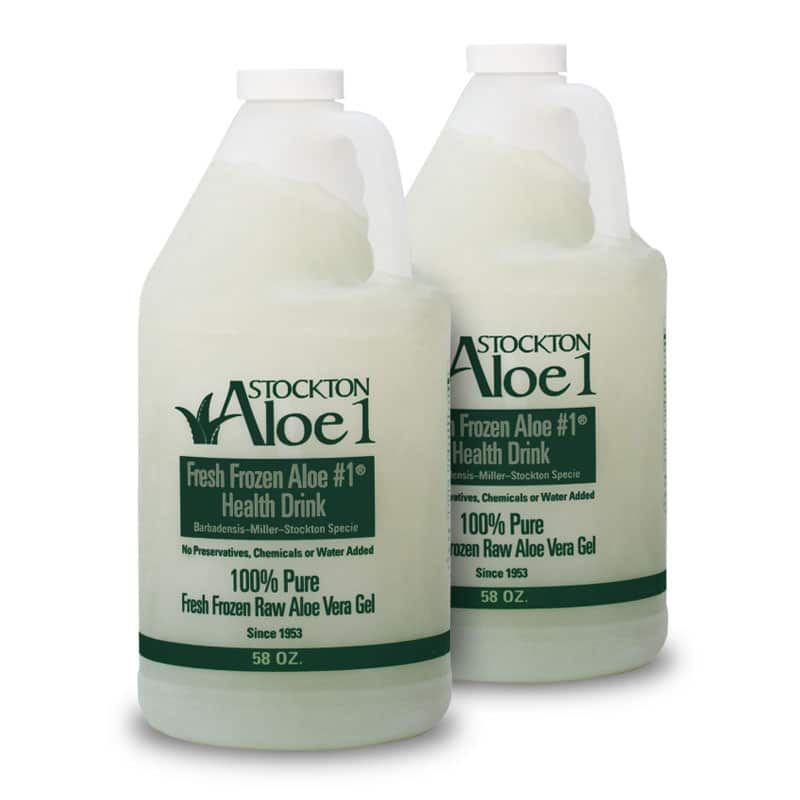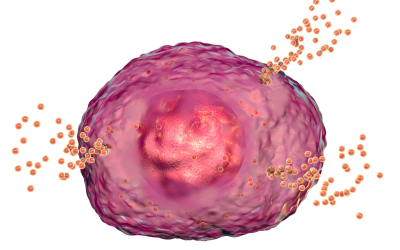Aloe vera is probably the most important medical food you should have for your healing.
Aloe vera has been considered a medical plant for thousands of years, thanks for its potential of remedying many of our common human ailments.
Did you know that 2000 years ago the Greek scientists regarded Aloe vera as a universal panacea? The Egyptians named the plant “the plant of immortality”.
Aloe vera has a long history of popular and traditional use such as for digestive issues, skin issues and infections, as well as high blood pressure and diabetes.
In Chinese medicine, it is often recommended to treat fungal diseases such as Candida.
Did you know that there is a total of 75 potentially active constituents that have been reported in the Aloe Vera plant? That includes things such as essential amino acids, vitamins, minerals, sterols, saponins among many more.
Aloe Vera provides 20 of the 22-human required amino acids, and 7 of the 8 essential amino acids.
It is also a good source of vitamin A, C, E, B1, B2, B3, B6, folate and choline. It contains many immune boosting minerals such as zinc, magnesium, copper, as well as calcium, manganese, chromium, selenium, potassium and sodium.
For those of you who have ran a hair tissue mineral analysis with me and found imbalances in your minerals, this is the perfect food.
In addition, some of these minerals are antioxidants and also support phase 1 and 2 liver detox pathways.
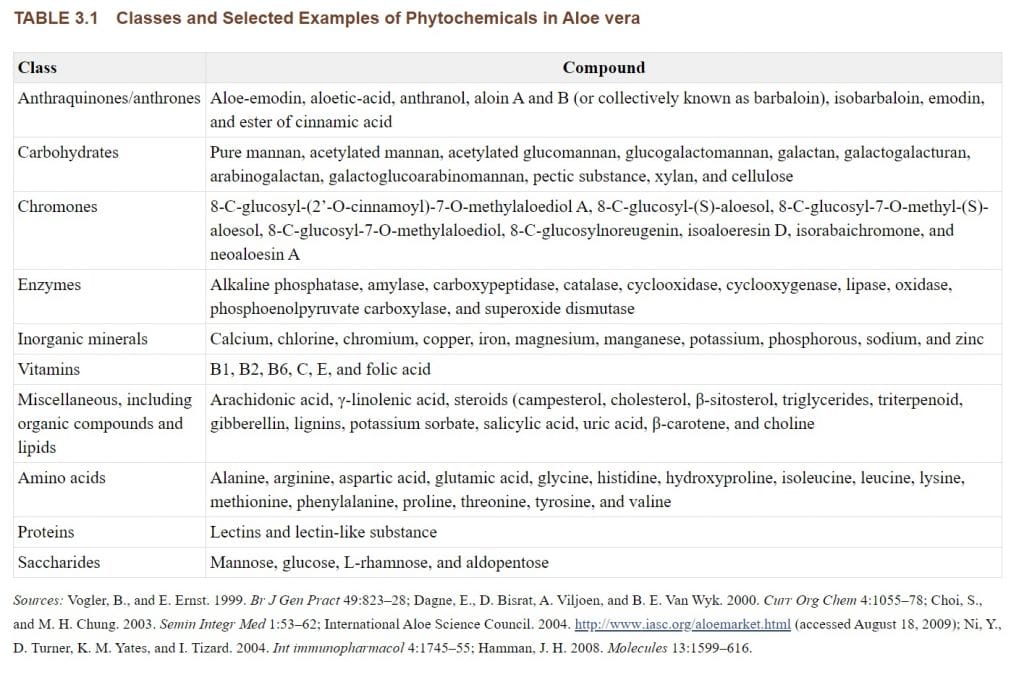
Mode of Action
The healing property of Aloe vera is associated with a compound called glucomannans, which is enriched with polysaccharides (such as mannose).
Aloe’s polysaccharides are known to have significant immunoregulatory and immunostimulatory activities. Aloe’s polysaccharides, particularly mannose-containing polysaccharides, cellulose, and pectic polysaccharides, comprise the major part of Aloe vera gel. Acetylated glucomannan is primarily responsible for the gel’s mucilaginous properties. Glucomannan has been found in vitro and in animal studies to modulate immune function (through macrophage activation and cytokine production) and accelerate wound healing The main effects include stimulation of phagocytosis, oxidative effects, and stimulation of humoral immunity (Foster et al, 2011)
The polysaccharides mend fibroblast growth factor and encourages the activity and proliferation of these cells result in more collagen and elastic fibers production. It also improves transversal connections among these bands making the skin more elastic and less wrinkled.
Mucopolysaccharides help in binding moisture into the skin and have anti-aging effect. There are some reports of aloe having an antitumor and antimicrobial effect as well but directly and indirectly. Direct effects are due to Anthraquinone which inactivate various enveloped viruses such as herpes simplex, influenza and varicella zoster. Indirect effect involves stimulation of the immune system _Kazina et al, 2017). Some components such as salicylic acid within aloe can promote anti-inflammatory and antibacterial properties. Other antiseptic agents include slupeol, salicylic acid, cinnamonic acid, phenols and sulfur that have an inhibitory action on bacteria, viruses and fungi. And some of the compounds present in aloe mucilage inhibit the production of reactive oxygen species and free radicals from human neutrophils.
ALOE VERA FOR DIGESTION AND BLADDER
But most importantly for IC Healers is the healing potential of aloe for digestive issues. As we know, there is a link to gut health and bladder health, as I explain in my IC Self Healing Course. In fact, a good % of people with bladder issues have leaky gut, and about 40% have small intestinal bacterial overgrowth (SIBO). Research has found that aloe vera gel was safe and effective of the “wound hormone” which was later identified as Acemannan. In fact, consuming aloe orally appeared to be the best route of administration for gut health.
Aloe vera contains a natural buffer system that can restore a healthy level of stomach acid by raising the pH enough to relieve discomfort of indigestion, but not enough to trigger the release of more acid. As a result, it appears to have a modulatory effect on digestion.
Aloe also functions as a prebiotic to promote the growth of good flora to optimize digestive function. Prebiotics promote the growth of beneficial bacterial populations such as Lactobacillus and Bifidobacterium species in the colon, accompanied by the production of short-chain fatty acids (SCFAs) through fermentation processes. These events have been associated with a lower risk of nontransmissible chronic diseases, including some types of cancer such as colorectal cancer. A recent study by Quezada et al (2017)
It has been shown that human intestinal flora metabolizes polysaccharides after ingestion of Aloe vera. There is some evidence that aloe vera by healthy individuals aids in the health of the bacterial flora which in turn results in improved health of the digestive system as a whole. This was evidenced by better protein digestion when tested from urine samples.
In addition, Aloe vera increases collagen content and degree of collagen cross linkage within the wound, therefore supporting faster wound healing
Stomach acid balancing, soothing of the gastrointestinal tract, promoting growth of good bacteria and delivery of the wound hormone Acemannan are some of the properties that have made Aloe vera the plant of choice for ages. Daily oral consumption of Aloe vera can eliminate dependence upon both types of drugs commonly used to control excessive hydrochloric acid without any of the negative side effects. To reduce potential contamination of the digestive tract from pathogens it is important to consume properly processed organic Aloe vera inner leaf gel powder from a reputable source.
More on Acemannan
As I said above, the nutraceutical properties of Aloe vera have been attributed to a glucomannan known as acemannan. Acemannan is a β(1,4)-acetylated mannan-based polysaccharide derived from the plant aloe vera (Barbadensis milleri). The reported range of biological effects of acemannan includes:
- stimulation of the production of IL-1a, TNF-a, IL-6, nitric oxide and prostaglandin E2 by macrophages
- enhanced macrophage phagocytosis
- antiviral activity
- induction of tumor cell apoptosis or necrosis
Acemannan strengthens and supports the immune system by activating the macrophages, antibodies, and the killer cells. It lowers the tendency of the body to develop allergies. Hence,
Acemannan possesses characteristics that stimulate the immune system, are antiviral, antibacterial, and antifungal. This means that Aloe Vera can prohibit Candida growth. In a study by Radha (2014), they indicated that aloe vera demonstrated antimicrobial activity against Candida paraprilosis, Candida krusei, and Candida albicans. In addition, A. vera has anthraquinones as an active compound, which is structural analogue of tetracycline. The anthraquinones acts like tetracycline that inhibits bacterial protein synthesis by blocking the ribosomal A site (where the aminoacylated tRNA enters)(Radha & Laxmipriya, 2015). Polysaccharides of A. vera gel have been attributed direct bacterial activity through the stimulation of phagocytic leucocytes to destroy bacteria. A. vera contains pyrocatechol a hydroxylated phenol, known to have toxic effect on microorganisms such as H. Pylori as well, a well known cause of gastric infection.
It is especially the Acemannan which appears to enforce the production of butyrate. Butyrate belongs to the short-chain fatty acids, which are of immense importance for the intestinal immune system.
OTHER BENEFITS OF ALOE
- Oral hygiene– A lesser known benefit of the Aloe Vera is that it helps fight gum disease. If you want a natural, chemical free solution to bleeding and tender gums, Aloe is a natural anti-inflammatory. This is especially important for those who have chronic UTI’s and embedded infections, as there are some links the Aloe has had positive results in treating ulcerative colitis.
Be warned, the taste leaves a lot to be desired. Many people have described the gel that comes from certain strains of the plant as bitter and nauseating, but the benefits outweigh the sacrifice of having the taste linger in your mouth for some time. If the taste is too much to bear, you also have the choice of using a sweetened Aloe Vera-based toothpaste.
2. Fasting, detox and weight loss- Aloe Vera has most recently been used in trendy juice cleanses and juice fast, and studies have shown that certain properties of the plant can promote weight loss. The detoxifying effect can clean out the colon and can also increase your metabolic rate. Bear in mind that healthy weight loss is only possible in conjunction with a healthy diet and a regular exercise schedule. You may also lose weight if you use Aloe Vera, as it will stop your body from retaining too much water, which causes bloating.
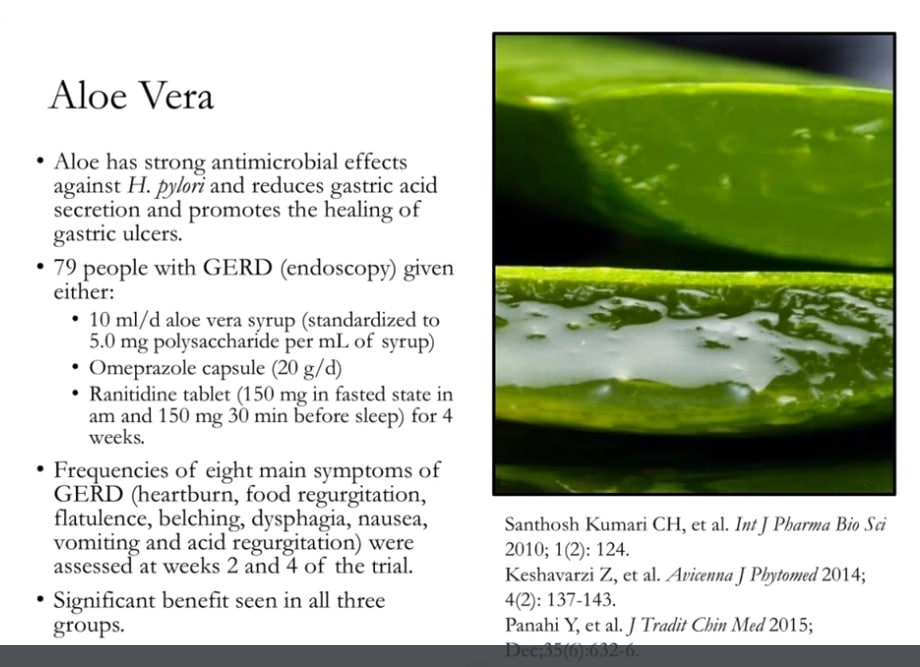
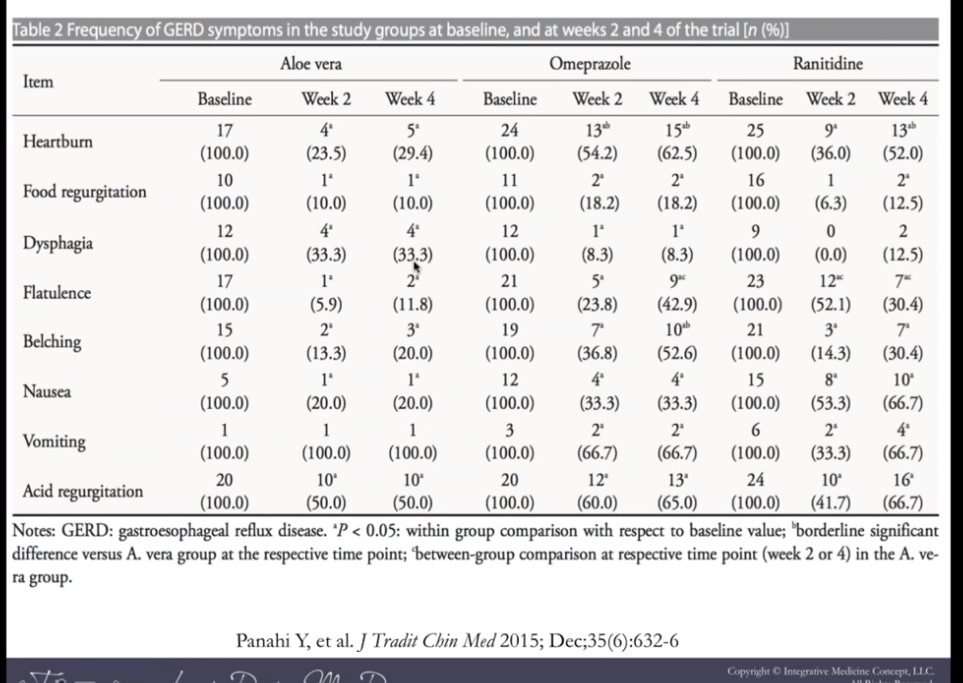
BEWARE OF IMPOSTER!
Despite clear beneficial effects of Aloe vera polysaccharides, some problems remain. There are virtually hundreds of different preparations on the market, vastly differing in types and quality of isolation, purity, and subsequently, their biological activities. Therefore, your aloe may not have any of the therapeutic and healing properties we mentioned.
Here are a few of the issues:
- Some commercial aloe products found in your health food store is NOT 100% aloe Vera, it is extremely filtered. The product manufacturers filtering the nutrients and antinutrients and bottling the water. That is why it doesn’t need preservatives and has an extremely long shelf life. That is also why it tastes like water. The water came out of the aloe plant. True aloe would have a very short shelf life.
- Most of your commercial aloe products does not have their own aloe firm. They are getting it from a 4th party as a powder. Often, it has been pasteurized prior to becoming a powder, which can ruin the properties of the aloe
- Pay attention when they dump in activated carbon and diamatecous earth to “purify it”. They push through a pressure filter to take it out. At the end they are testing the clear liquid. They are removing the color and odor which are the nutrients.
- Aloe vera gel often has added carrageenan that makes you think you are taking true aloe when in fact you are not.
I will be doing an interview with Dr. Haley, owner of Stockon aloe to discuss some of these and more. Stay tuned for the YouTube link below.
Here is a table that summarizes some of the many powers of aloe vera. It should be included in your healing regimen, provided that it is good quality as discussed. I strongly recommend the Stockton aloe as a medicinal food. I usually will purchase an 8-pack and freeze it to consume before my seasonal detox programs.
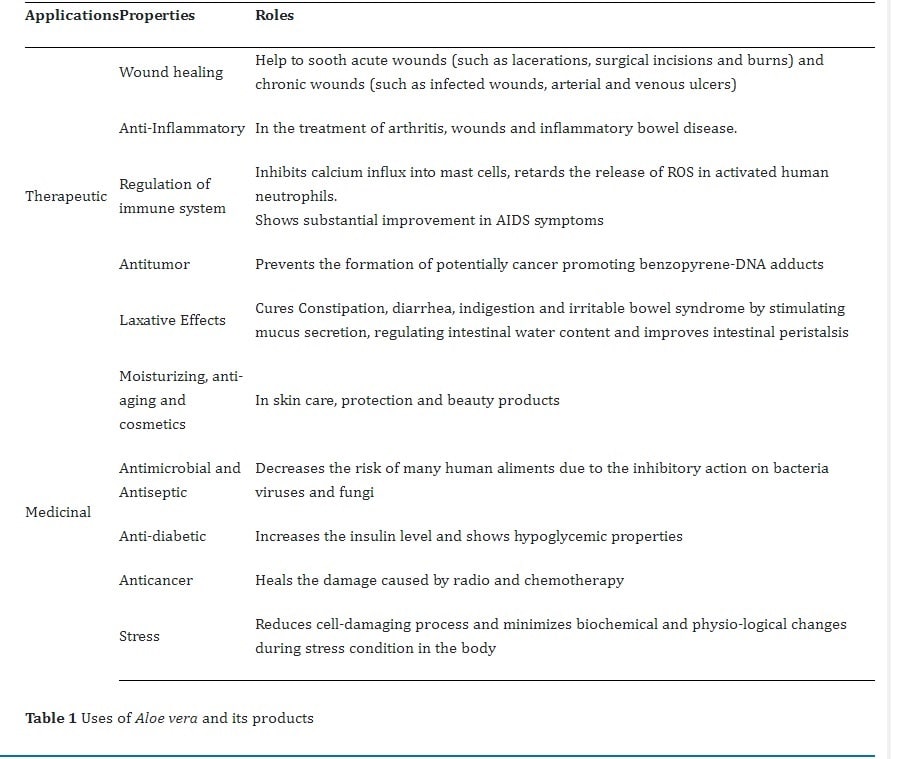
To order aloe, VISIT THIS LINK. I recommend you start with a 2 count first to see how you do, I am sure you will LOVE IT.
References
Amin K, Ozgen S, Selamoglu Z. Aloe Vera: a miracle plant with its wide-ranging applications. Pharm Pharmacol Int J. 2018;6(1):1-2. DOI: 10.15406/ppij.2018.06.00144
Foster M, Hunter D, Samman S. Evaluation of the Nutritional and Metabolic Effects of Aloe vera. In: Benzie IFF, Wachtel-Galor S, editors. Herbal Medicine: Biomolecular and Clinical Aspects. 2nd edition. Boca Raton (FL): CRC Press/Taylor & Francis; 2011. Chapter 3
Radha, M. H., & Laxmipriya, N. P. (2015). Evaluation of biological properties and clinical effectiveness of Aloe vera: A systematic review. J Tradit Complement Med, 5(1), 21-26. doi:10.1016/j.jtcme.2014.10.006
Vetvicka, (nd) Evaluation of immunological activities of an organic freeze dried inner leaf Aloe vera L powder

